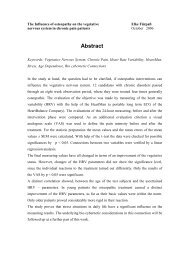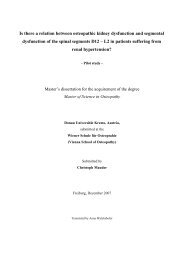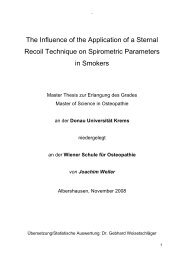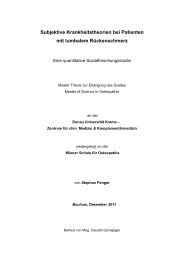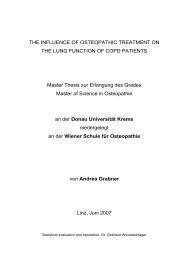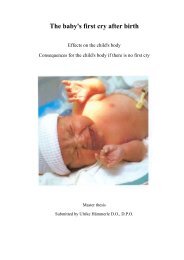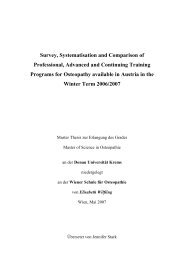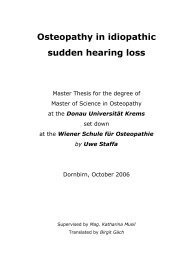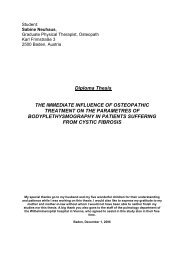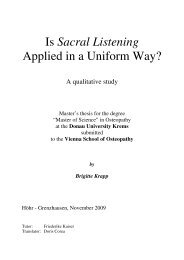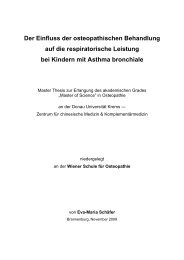Can back pain caused by symptom-giving sacroiliac joint relaxation ...
Can back pain caused by symptom-giving sacroiliac joint relaxation ...
Can back pain caused by symptom-giving sacroiliac joint relaxation ...
Create successful ePaper yourself
Turn your PDF publications into a flip-book with our unique Google optimized e-Paper software.
3.4.2. Pain provocation SIJ test<br />
Provocation SIJ test series according to Laslett<br />
In 1994, Pescioli et al. first reported study results on a good to excellent agreement<br />
of seven provocation SIJ tests according to Laslett [30]. [48] The authors state that at<br />
least four of these tests have to be positive in order to be able to speak of an SIJ<br />
dysfunction.<br />
The <strong>pain</strong> provocation tests of distraction, compression, thigh thrust, and pelvic torsion<br />
(see table 3A) have substantial intertherapist reliability (see table 3C). The sacral<br />
thrust and cranial shear procedures (see table 3A) are moderately reliable (see table<br />
3C). [30]<br />
Sacroiliac test Picture I.A.<br />
(n=51) [30]<br />
K<br />
(n=51) [30]<br />
Sensitivity<br />
(n=48) [31]<br />
Specificity<br />
(n=48) [31]<br />
Distraction Fig. 3F 88.2 0.69 0.60 0.81<br />
Compression Fig. 3G 88.2 0.73 0.69 0.69<br />
Sacral thrust Fig. 3H 78.0 0.52 0.63 0.75<br />
Thigh thrust Fig. 3I 94.1 0.88 0.88 0.69<br />
Pelvic torsion right Fig. 3J 88.2 0.75 0.53 0.71<br />
Pelvic torsion left Fig. 3K 88.2 0.72 0.50 0.75<br />
Cranial shear Fig. 3L 84.3 0.61 X X<br />
I.A. = interexaminar agreement; K = kappa agreement coefficient<br />
Table 3A: Specific values of the tests according to Laslett<br />
In 2005 Laslett published a study [31] on the sensitivity and specificity of the<br />
provocation SIJ test in which he examined only six <strong>pain</strong> provocation SIJ tests.<br />
Unfortunately in this publication he did not refer to the 1994 study; hence it is not<br />
clear why he examined one test less in the latter study.<br />
The thigh thrust test is the most sensitive test and the distraction test is the most<br />
specific one. In order to increase the sensitivity and the specificity, all six tests are<br />
assessed together.<br />
Master’s Thesis Wolfgang Aspalter 41



